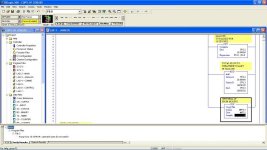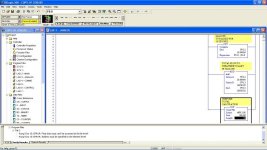PLBoudette
Member
I have a ML1400 Series B controller which is integrated with Wonderware via Modbus TCP. I have a flow totalizer in the ML as a floating point value which I'm trying to send via Modbus. The ML manual says only B (bits) & N (integers) files are accessed via Modbus. I'm wondering if there is an easy way to be able to convert this large floating point number as some type of integer representation for Modbus. I thought about setting up the totalizer in Wonderware but the system communicates over the internet which occasionally will dropout and thus, would compromise the totalizer value. I think the better idea is coding it in the ML which is backed up by a UPS so it will always hold the totalizer value even if the internet fails. I also thought of just copying the floating point number to 32 bit files for transmission and then break those down in Wonderware but it seems like a big hassle. Was wondering if anyone knew of any easier way? Maybe I'm missing an easier solution. Thanks in advance.




